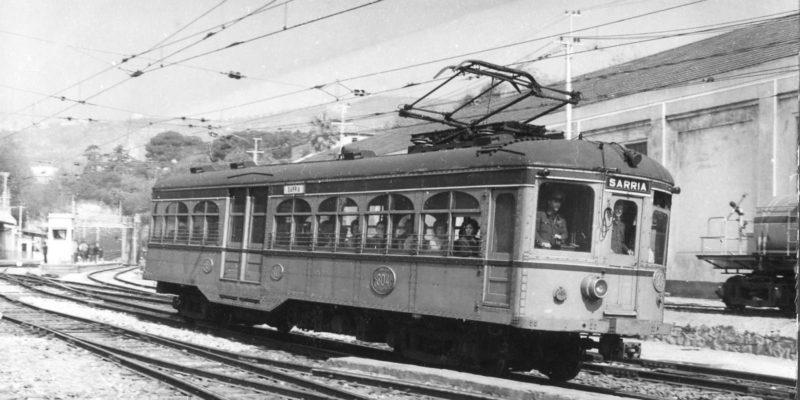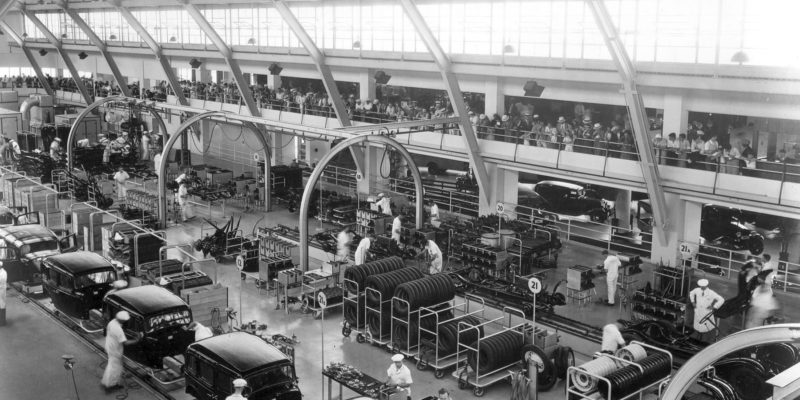We explain what the Second Industrial Revolution was, what are its characteristics and the advances that took place in this period.
What is the Second Industrial Revolution?
The Second Industrial Revolution corresponds to the period that began between the years 1850-1870 and the start of the First World War in 1914 . It was a time of important economic and social changes as a consequence of accelerated technological development.
The technology has changed the world in many ways throughout history , but the period of the Second Industrial Revolution was unprecedented: he transformed the everyday life with new energy sources , transport, production and telecommunications.
Characteristics of the Second Industrial Revolution

The main factors of the Second Industrial Revolution and from which numerous contributions emerged, were:
- Industrialization and the new serial production system.
- The development of transport (for the production of steel for railways and new fuels).
- The new sources of energy (the main one was oil, which would replace coal).
- The great advances in telecommunications.
Industrialization
New industries were born as a result of great inventions, such as automatic machines capable of manufacturing parts for other machinery (a process called machine automation), which allowed improving competitiveness in the market after accelerating production times and reducing costs ( because it required less manpower).The world market was divided into two large groups : the dominant producing countries and the dependent countries that came from raw materials (manufacturing used to be more expensive than raw materials, always leaving a favorable balance for industrial countries).
Labor exploitation emerged (including child labor), with days of more than 12 hours and insufficient wages, making work in some factories exhausting and inhumane.
The mechanization of labor
 The new production system was based on Taylor's model of series production, which proposed that each worker make a part of a piece within an assembly line and in a specified time, in order to reduce production costs and increase the productivity of people to the maximum possible.
The new production system was based on Taylor's model of series production, which proposed that each worker make a part of a piece within an assembly line and in a specified time, in order to reduce production costs and increase the productivity of people to the maximum possible.In 1914, the Ford Motors Company car factory adopted the Taylorist model and incorporated a new social aspect: it held the idea that each worker should earn enough to buy one of the cars it manufactured, because a good salary guaranteed an increase in consumption. In this way, the capitalist economic system was strengthened .
The development of transport
 The development of transport was characterized by the electric railroad, which was one of the main responsible for the outbreak of the production system. The installation of long railways facilitated the transfer of thousands of people and supplies.
The development of transport was characterized by the electric railroad, which was one of the main responsible for the outbreak of the production system. The installation of long railways facilitated the transfer of thousands of people and supplies.England specialized in the construction of railways , exporting all over the world. A bond of dependency was created with the purchasing countries that had to remain linked with the English to obtain spare parts and technical service.
The increase in production led to the search for new fuels . Oil and electric power allowed the creation of new types of transport with faster engines, such as the boiler-powered ship, which, together with the railroad, allowed the expansion of trade .
New sources of energy
 In 1848 the chemist James Young had a small business that refined crude oil . Time later, the technological development of China allowed the drilling of wells whose technique spread throughout the world. One of the derived fuels was kerosene, used for lighting (it was more efficient and less expensive than vegetable or alternative oils of the time).
In 1848 the chemist James Young had a small business that refined crude oil . Time later, the technological development of China allowed the drilling of wells whose technique spread throughout the world. One of the derived fuels was kerosene, used for lighting (it was more efficient and less expensive than vegetable or alternative oils of the time).In 1879 the discovery of electricity was made, which had been studied by various researchers with different contributions. It was Tomas Alva Edison who invented the incandescent lamp , which allowed its use for public lighting and the home. This method replaced the old kerosene lighting system.
Telecommunications
 Among the most notable discoveries in telecommunications during the process of the Second Industrial Revolution, the following stand out:
Among the most notable discoveries in telecommunications during the process of the Second Industrial Revolution, the following stand out:
- The Telegraph. It was built in 1837 by Samuel Morse, called “morse code”. The device allowed instant communication through a language of dots and lines. It reached a great impact in the main cities of the world, where extensive cables were laid, initially, for the use of the railways.
- The phone . In 1876 Antonio Meucci invented a telecommunication device designed to transmit conversations by means of electrical signals. Alexander Graham Bell was the first to patent this invention so it is sometimes confused with its inventor.
- The cinema . In 1895 the Lumiere brothers created the first cinematograph that transmitted images without sound . The first film they aired was called “Exit of the workers from the Lumière factory”. Cinema was a highly influential means of expression and communication.
Advances in science and chemistry
 In 1864 the chemist Louis Pasteur created a process for the preservation of food called "pasteurization" that allowed the destruction of microorganisms and bacteria , without altering the original composition of the substance.
In 1864 the chemist Louis Pasteur created a process for the preservation of food called "pasteurization" that allowed the destruction of microorganisms and bacteria , without altering the original composition of the substance.In 1882 the physician and microbiologist Robert Koch described the etiological agent of the bacterium that causes tuberculosis. In 1897 the chemist Felix Hoffmann discovered acetylsalicylic acid which, two years later, the Bayer company patented under the name Aspirin.
These and many other advances in science and medicine made it possible to control or reduce diseases , extending the average life expectancy.
Experiments and research in the area of chemistry were based on the development of fertilizers and explosives that later allowed the development of nuclear weapons to be used during the Second World War .
The consequences of the Second industrial revolution
 The systematic production developed during the Second Industrial Revolution had as a consequence the acceleration of production, achieving greater competitiveness in the market which, in turn, increased unemployment due to the replacement of employees by machinery. In addition, the use of technology prompted great and important discoveries that changed the course of history to the present day.
The systematic production developed during the Second Industrial Revolution had as a consequence the acceleration of production, achieving greater competitiveness in the market which, in turn, increased unemployment due to the replacement of employees by machinery. In addition, the use of technology prompted great and important discoveries that changed the course of history to the present day.The labor movement led by socialist and anarchist unions also arises , as a consequence of the growing labor exploitation (in the desire to achieve maximum competitiveness in the market ) and unemployment (due to the replacement of labor by machinery), with the aim to improve the standard of living of workers and to demand a better distribution of wealth.
The above content published at Collaborative Research Group is for informational and educational purposes only and has been developed by referring reliable sources and recommendations from experts. We do not have any contact with official entities nor do we intend to replace the information that they emit.
MA student of the TransAtlantic Masters program at UNC-Chapel Hill. Political Science with a focus on European Studies. Expressed ideas are open to revision. He not only covers Technical articles but also has skills in the fields of SEO, graphics, web development and coding. .
Leave a reply
Your email address will not be published. Required fields are marked *Recent post

Sport: What Is It, Types, Risks, Features, Characteristics and Examples

Dogs: Emergence, Features, Characteristics, Feeding and Breeds

Story: Definition, Elements, Structure, Features and Characteristics

